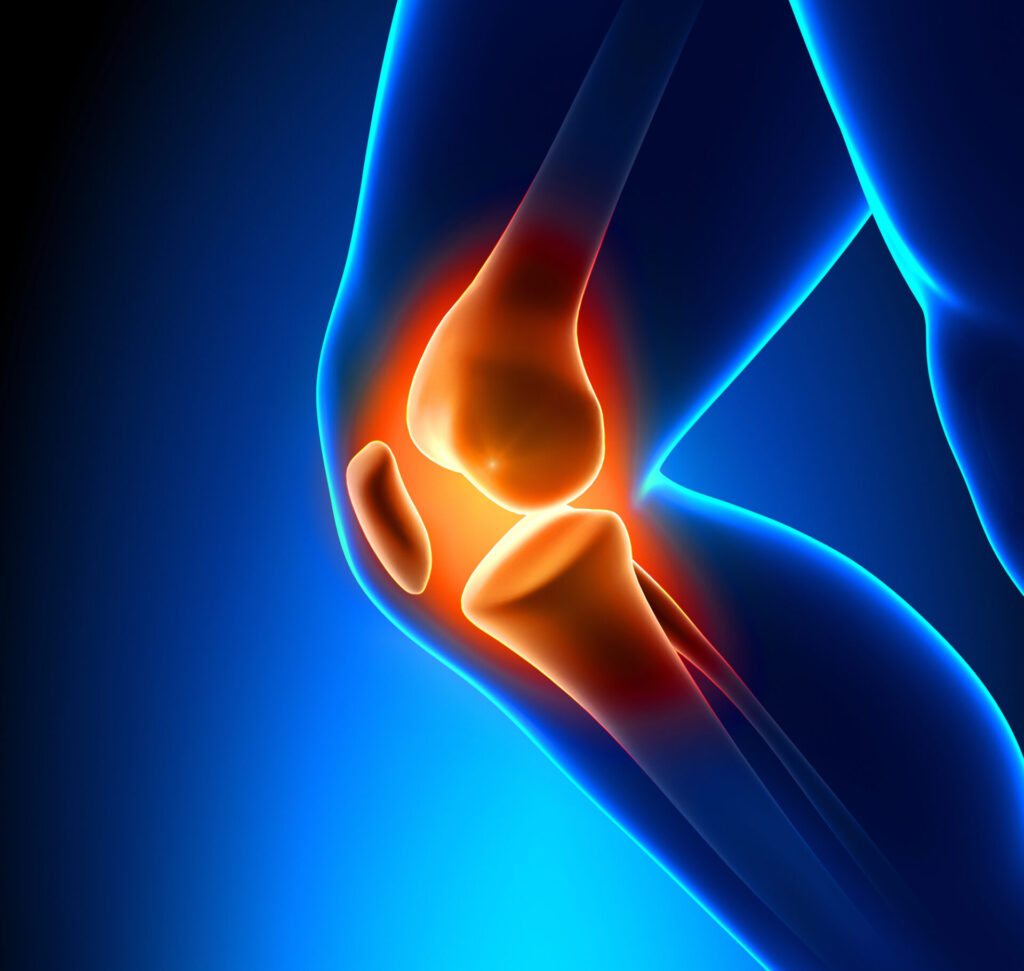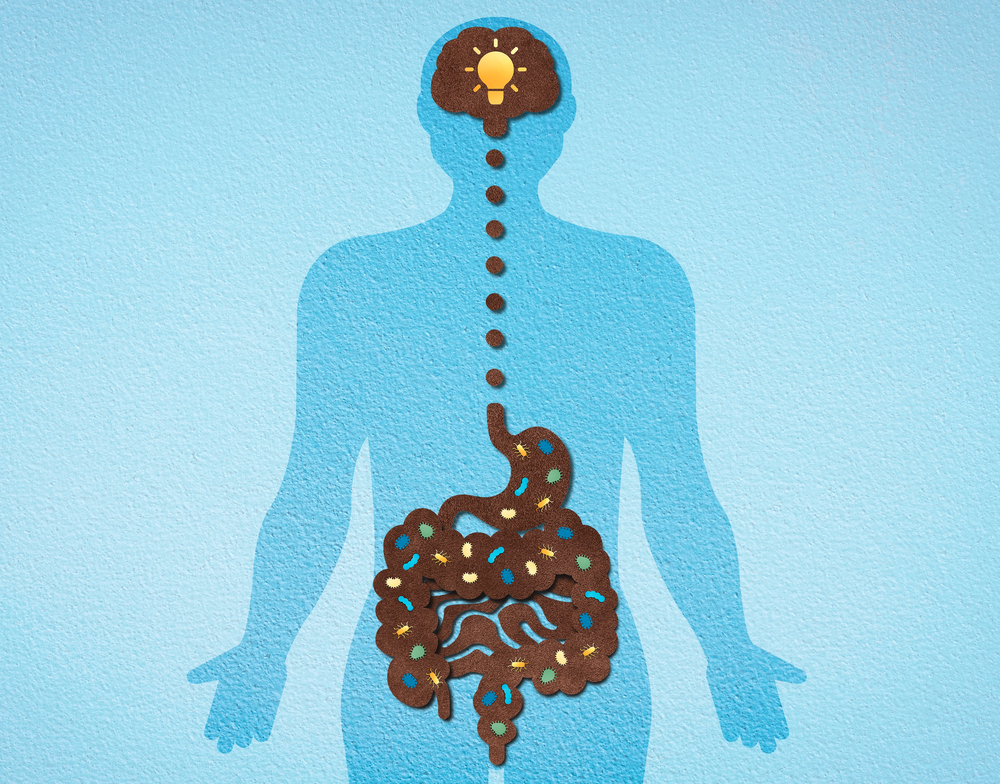Stimulants and sedatives, they are a push-pull solution to our stress-packed world that are nothing but trouble. In our go-go-go world, we see not only our patients but also ourselves at times drawn to substances that serve as stimulants to keep us going, and sedatives to help us relax. Whether the stimulants and sedatives are as mild as caffeine and a glass of wine at the end of the day or includes medications such as methylphenidates or amphetamines to keep us cognitively “on” and a benzodiazepine to help us wind down, it’s likely that your patients have been somewhere on this spectrum. Not surprisingly, each of these substances comes with an array of potential side effects that your patients many not be aware of and can be particularly damaging when depended on chronically or used in excess.
Stimulants and Sleep
Caffeine is for many the drug of choice whether it be in coffee, tea, chocolate, or energy drinks. Caffeine stimulates the central nervous system, promoting wakefulness and increased attention.1 Acute caffeine intake has been shown to enhance working memory-related brain activation,2 enhance post-study memory consolidation,3 decrease fatigue, improve exercise performance,4 and increase attention.5 However, excessive caffeine consumption can cause psychomotor agitation, insomnia, headache and gastrointestinal complaints,6 while even typical doses can increase urinary urgency and frequency, anxiety and blood pressure, particularly in sensitive individuals who already experience these challenges.7,8,9 In pediatrics, caffeine consumption can adversely affect brain and bone development and increase risk-taking behaviors.10,11 Higher caffeine consumption in this population is also associated with anxiety and depression.12 Chronic use of caffeine also has an abuse or dependence potential,13,14 as many whom have tried to give up the use of this substance likely have seen, with withdrawal symptoms commonly including headaches,15 impaired memory,16 irritability, sleepiness and dysphoria.17
Energy drinks, of course, bring us caffeine plus an array of energy-stimulating nutrients such as B vitamins, taurine, guarana, ginseng and frequently sugar. Energy drinks mixed with alcohol, a common selection of younger bar and dance club enthusiasts, have associations with binge drinking, alcohol dependence, increased impulsivity 18 and high-risk behaviors 19 – so much that this habit alone should be considered high-risk drinking.20 Multiple cases of atrial fibrillation in young individuals after the intake of energy drinks have also been reported,21,22; shedding light on the concern for cardiac issues particularly in individuals with familial long QT syndrome.23
Stimulant medications like methylphenidates and amphetamines are seeing a heyday like no other as well, with a factor of four increase in stimulant prescriptions in both youth and adults from a decade prior.24,25 Although in childhood, boys are approximately five times more likely to be prescribed a medication such as these for attention deficit issues,26 in adulthood, women have a higher rate of stimulant prescription than men.27 Although prescription rates are high, actual use population wide is far greater, with 5% to 35% of college students reporting non-prescribed stimulant use.28 There is a high potential for misuse and abuse, as medications such as these affect dopamine pathways,29,30 triggering the dopamine reward pathways.31 The dangers of these medications are many. Adverse effects include arrhythmia, insomnia and sleep problems, decreased appetite, headache, abdominal pain, hallucinations, paranoia, delusional disorder, aggressive behavior, irritability, depression, and suicidality.32,33
Sedatives and Sleep
It is far from uncommon to hear a patient mention that they often have a drink or two to help them fall asleep at night. Although alcohol acts as a sedative to promote sleep, sleep patterns are altered with alcohol consumption, leading to diminished sleep quality.34 Alcohol consumption in higher amounts has been shown to lead to sleep disturbances in the second half of the night, while tolerance also develops to the initial sedative effects. Additionally, alcohol use in the evening can be a contributor to increased issues of gastroesophageal reflux at night, as normal nocturnal acid clearance of the esophagus is impaired by even moderate amounts of alcohol.35 Alcohol worsens sleep apnea, with marked increases in hypoxemia during the first hour of sleep.36 All of these factors can contribute to increased daytime sleepiness and patterns of dependence. The chronic use and abuse of alcohol can contribute to the development of health complications including cancer,37 cardiovascular disease,38 and dementia,39 giving many reasons to avoid dependent or excessive use of this substance.
to lead to sleep disturbances in the second half of the night, while tolerance also develops to the initial sedative effects. Additionally, alcohol use in the evening can be a contributor to increased issues of gastroesophageal reflux at night, as normal nocturnal acid clearance of the esophagus is impaired by even moderate amounts of alcohol.35 Alcohol worsens sleep apnea, with marked increases in hypoxemia during the first hour of sleep.36 All of these factors can contribute to increased daytime sleepiness and patterns of dependence. The chronic use and abuse of alcohol can contribute to the development of health complications including cancer,37 cardiovascular disease,38 and dementia,39 giving many reasons to avoid dependent or excessive use of this substance.
Another common sedative that often comes up in patient histories is first-generation antihistamines, which non-selectively act as H1 antagonists in the central and peripheral nervous system. This over-the-counter medication has well-known sleep-promoting effects that most patients are aware of, either from their physician’s recommendation, personal experience, or other channels. In the elderly, first-generation antihistamine use has been shown to contribute to non-amnestic mild cognitive deficits in non-demented patients, disorganized speech, delirium symptoms, altered consciousness, and increased need for urinary catheter placement. 40,41,42 Common side effects not limited to the elderly include daytime somnolence, constipation, urinary retention, dry mouth, blurred vision, and increased intraocular pressure.43,44,45 Many of these things the elderly are also at greater for, and the effects of this medication can easily be overlooked.
Major classes of prescription medications approved for treatment of insomnia include benzodiazepines and nonbenzodiazepine hypnotics. Meta-analysis has shown that compared to placebo, benzodiazepines have a non-significant effect of decreasing sleep latency by 4.2 minutes and significantly increase total sleep duration by 61.8 minutes, although patient’s report them being much more effective.46 Several of the nonbenzodiazepine hypnotics have a short half-life, making them only effective for sleep onset difficulties. The extended-release format available of zolpidem has improved effectivity for improving sleep maintenance insomnia, but may begin to accumulate in the body, and comes with the warning that patients should not drive or engage in other activities that require complete mental alertness even the next day.47 Potential adverse effects with both categories of drug are many. This includes but is not limited to: performing activities one is not aware of during sleep (eating, having sex, walking), cognitive impairments, daytime somnolence, next day impairments, hallucinations, aggressive behavior, anterograde amnesia, lightheadedness, motor incoordination, worsening of sleep apnea, and dependence.40,48 In the elderly, the use of these medications contribute to falls and cognitive decline,46,49 while a dramatic increase in suicide rate has also been seen.50
As per many medications and central nervous system-affecting substances, appropriate and non-appropriate use of each of these substances is common. Generally speaking, if use patterns become chronic or excessive, there may be cause for concern. Many nutritional supplements also are available that support sleep and relaxation, as well as healthy energy levels and cognitive function through the day. As integrative healthcare practitioners, it is our job to make sure awareness of these safe and often restorative alternatives make it into our patients’ hands.
Dr. Decker is a Naturopathic Doctor, graduating with honors from the National College of Natural Medicine (now the National University of Natural Medicine) in Portland, Oregon. Dr. Decker sees patients at her office in Portland, OR, as well as remotely, with a focus on gastrointestinal disease, mood imbalances, eating disorders, autoimmune disease, and chronic fatigue. Prior to becoming a naturopathic physician, Dr. Decker was an engineer, and obtained graduate degrees in biomedical and mechanical engineering from the University of Wisconsin-Madison and University of Illinois at Urbana-Champaign respectfully. Dr. Decker continues to enjoy academic research and writing and uses these skills to support integrative medicine education as a writer and contributor to various resources. Dr. Decker supports Allergy Research Group® as a member of their education and product development team.
[1] Nehlig A, et al. Caffeine and the central nervous system: mechanisms of action, biochemical, metabolic and psychostimulant effects. Brain Res Brain Res Rev. 1992 May-Aug;17(2):139-70.
[2] Haller S, et al. Acute caffeine administration impact on working memory-related brain activation and functional connectivity in the elderly: a BOLD and perfusion MRI study. Neuroscience. 2013 Oct 10;250:364-71.
[3] Borota D, et al. Post-study caffeine administration enhances memory consolidation in humans. Nat Neurosci. 2014 Feb;17(2):201-3.
[4] Irwin C, et al. Caffeine withdrawal and high-intensity endurance cycling performance. J Sports Sci. 2011 Mar;29(5):509-15.
[5] Lanini J, et al. Acute personalized habitual caffeine doses improve attention and have selective effects when considering the fractionation of executive functions. Hum Psychopharmacol. 2016 Jan;31(1):29-43.
[6] Wierzejska R. [Caffeine–common ingredient in a diet and its influence on human health]. Rocz Panstw Zakl Hig. 2012;63(2):141-7.
[7] Wells MJ, et al. The effect of caffeinated versus decaffeinated drinks on overactive bladder: a double-blind, randomized, crossover study. J Wound Ostomy Continence Nurs. 2014 Jul-Aug;41(4):371-8.
[8] Smith JE, et al. Storm in a coffee cup: caffeine modifies brain activation to social signals of threat. Soc Cogn Affect Neurosci. 2012 Oct;7(7):831-40.
[9] Lopez-Garcia E, et al. Habitual coffee consumption and 24-h blood pressure control in older adults with hypertension. Clin Nutr. 2016 Dec;35(6):1457-1463.
[10] Ali E, et al. Caffeine is a risk factor for osteopenia of prematurity in preterm infants: a cohort study. BMC Pediatr. 2018 Jan 22;18(1):9.
[11] Temple JL, et al. Effects of acute and chronic caffeine on risk-taking behavior in children and adolescents. J Psychopharmacol. 2017 May;31(5):561-568.
[12] Richards G, Smith A. Caffeine consumption and self-assessed stress, anxiety, and depression in secondary school children. J Psychopharmacol. 2015 Dec;29(12):1236-47.
[13] Jain S, et al. Caffeine addiction: Need for awareness and research and regulatory measures. Asian J Psychiatr. 2017 Feb 4.
[14] Ogawa N, Ueki H. Clinical importance of caffeine dependence and abuse. Psychiatry Clin Neurosci. 2007 Jun;61(3):263-8.
[15] Sjaastad O, Bakketeig LS. Caffeine-withdrawal headache. The Vågå study of headache epidemiology. Cephalalgia. 2004 Apr;24(4):241-9.
[16] Palmer MA, et al. Caffeine cravings impair memory and metacognition. Memory. 2017 Oct;25(9):1225-1234.
[17] Dews PB, et al. Caffeine: behavioral effects of withdrawal and related issues. Food Chem Toxicol. 2002 Sep;40(9):1257-61.
[18] Snipes DJ, et al. Alcohol mixed with energy drinks are robustly associated with patterns of problematic alcohol consumption among young adult college students. Addict Behav. 2015 Feb;41:136-41.
[19] Brache K, Stockwell T. Drinking patterns and risk behaviors associated with combined alcohol and energy drink consumption in college drinkers. Addict Behav. 2011 Dec;36(12):1133-40.
[20] Bigard AX. [Risks of energy drinks in youths]. Arch Pediatr. 2010 Nov;17(11):1625-31.
[21] Di Rocco JR, et al. Atrial fibrillation in healthy adolescents after highly caffeinated beverage consumption: two case reports. J Med Case Rep. 2011 Jan 19;5:18.
[22] Sattari M, et al. Energy Drink Consumption and Cardiac Complications: A Case for Caution. J Addict Med. 2016 Jul-Aug;10(4):280-2.
[23] Gray B, et al. Cardiovascular Effects of Energy Drinks in Familial Long QT Syndrome: A Randomized Cross-Over Study. Int J Cardiol. 2017 Mar 15;231:150-154.
[24] Olfson M, et al. National trends in the use of psychotropic medications by children. J Am Acad Child Adolesc Psychiatry. 2002 May;41(5):514-21.
[25] Anderson KN, et al. Attention-Deficit/Hyperactivity Disorder Medication Prescription Claims Among Privately Insured Women Aged 15-44 Years – United States, 2003-2015. MMWR Morb Mortal Wkly Rep. 2018 Jan 19;67(2):66-70.
[26] Renoux C, et al. Prescribing trends of attention-deficit hyperactivity disorder (ADHD) medications in UK primary care, 1995-2015. Br J Clin Pharmacol. 2016 Sep;82(3):858-68.
[27] Safer DJ. Recent Trends in Stimulant Usage. J Atten Disord. 2016 Jun;20(6):471-7.
[28] Wilens TE, et al. Misuse and diversion of stimulants prescribed for ADHD: a systematic review of the literature. J Am Acad Child Adolesc Psychiatry. 2008 Jan;47(1):21-31.
[29] Clemow DB, et al. Misuse of Methylphenidate. Curr Top Behav Neurosci. 2017;34:99-124.
[30] Casey KF, et al. Reduced dopamine response to amphetamine in subjects at ultra-high risk for addiction. Biol Psychiatry. 2014 Jul 1;76(1):23-30.
[31] Franken IH, et al. The role of dopamine in human addiction: from reward to motivated attention. Eur J Pharmacol. 2005 Dec 5;526(1-3):199-206.
[32] Storebø OJ, et al. Methylphenidate for attention deficit hyperactivity disorder (ADHD) in children and adolescents – assessment of adverse events in non-randomised studies. Cochrane Database Syst Rev. 2018 May 9;5:CD012069.
[33] Morton WA, Stockton GG. Methylphenidate Abuse and Psychiatric Side Effects. Prim Care Companion J Clin Psychiatry. 2000 Oct;2(5):159-164.
[34] Roehrs T, Roth T. Sleep, sleepiness, sleep disorders and alcohol use and abuse. Sleep Med Rev. 2001 Aug;5(4):287-297.
[35] Vitale GC, et al. The effect of alcohol on nocturnal gastroesophageal reflux. JAMA. 1987 Oct 16;258(15):2077-9.
[36] Issa FG, Sullivan CE. Alcohol, snoring and sleep apnea. J Neurol Neurosurg Psychiatry. 1982 Apr;45(4):353-9.
[37] Jin M, et al. Alcohol drinking and all cancer mortality: a meta-analysis. Ann Oncol. 2013 Mar;24(3):807-16.
[38] Di Castelnuovo A, et al. Alcohol dosing and total mortality in men and women: an updated meta-analysis of 34 prospective studies. Arch Intern Med. 2006 Dec 11-25;166(22):2437-45.
[39] Topiwala A, et al. Moderate alcohol consumption as risk factor for adverse brain outcomes and cognitive decline: longitudinal cohort study. BMJ. 2017 Jun 6;357:j2353.
[40] Tannenbaum C, et al. A systematic review of amnestic and non-amnestic mild cognitive impairment induced by anticholinergic, antihistamine, GABAergic and opioid drugs. Drugs Aging. 2012 Aug 1;29(8):639-58.
[41] Basu R, et al. Sedative-hypnotic use of diphenhydramine in a rural, older adult, community-based cohort: effects on cognition. Am J Geriatr Psychiatry. 2003 Mar-Apr;11(2):205-13.
[42] Agostini JV, et al. Cognitive and other adverse effects of diphenhydramine use in hospitalized older patients. Arch Intern Med. 2001 Sep 24;161(17):2091-7.
[43] National Institutes of Health. National Institutes of Health State of the Science Conference statement on Manifestations and Management of Chronic Insomnia in Adults, June 13-15, 2005. Sleep. 2005 Sep;28(9):1049-57.
[44] Cancelli I, et al. Drugs with anticholinergic properties: cognitive and neuropsychiatric side-effects in elderly patients. Neurol Sci. 2009 Apr;30(2):87-92.
[45] Mintzer J, Burns A. Anticholinergic side-effects of drugs in elderly people. J R Soc Med. 2000 Sep;93(9):457-62.
[46] Holbrook AM, et al. Meta-analysis of benzodiazepine use in the treatment of insomnia. CMAJ. 2000 Jan 25;162(2):225-33.
[47] FDA Drug Safety Communication: FDA approves new label changes and dosing for zolpidem products and a recommendation to avoid driving the day after using Ambien CR. Safety Announcement, 5/14/2013.
[48] Buscemi N, et al. The efficacy and safety of drug treatments for chronic insomnia in adults: a meta-analysis of RCTs. J Gen Intern Med. 2007 Sep;22(9):1335-50.
[49] Tannenbaum C, et al. Sedative-hypnotic medicines and falls in community-dwelling older adults: a cost-effectiveness (decision-tree) analysis from a US Medicare perspective. Drugs Aging. 2015 Apr;32(4):305-14.
[50] Carlsten A, Waern M. Are sedatives and hypnotics associated with increased suicide risk of suicide in the elderly? BMC Geriatr. 2009 Jun 4;9:20.
 to lead to sleep disturbances in the second half of the night, while tolerance also develops to the initial sedative effects. Additionally, alcohol use in the evening can be a contributor to increased issues of gastroesophageal reflux at night, as normal nocturnal acid clearance of the esophagus is impaired by even moderate amounts of alcohol.35 Alcohol worsens sleep apnea, with marked increases in hypoxemia during the first hour of sleep.36 All of these factors can contribute to increased daytime sleepiness and patterns of dependence. The chronic use and abuse of alcohol can contribute to the development of health complications including cancer,37 cardiovascular disease,38 and dementia,39 giving many reasons to avoid dependent or excessive use of this substance.
to lead to sleep disturbances in the second half of the night, while tolerance also develops to the initial sedative effects. Additionally, alcohol use in the evening can be a contributor to increased issues of gastroesophageal reflux at night, as normal nocturnal acid clearance of the esophagus is impaired by even moderate amounts of alcohol.35 Alcohol worsens sleep apnea, with marked increases in hypoxemia during the first hour of sleep.36 All of these factors can contribute to increased daytime sleepiness and patterns of dependence. The chronic use and abuse of alcohol can contribute to the development of health complications including cancer,37 cardiovascular disease,38 and dementia,39 giving many reasons to avoid dependent or excessive use of this substance.




